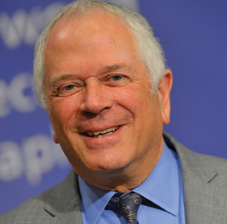A trade body representing the holography industry is urging China’s manufacturers and authorities to redouble efforts to stem what it calls the tide of counterfeiting. This comes after new statistics confirm that the country remains the main source of fake goods.
The International Hologram Manufacturers Association (IHMA) says reports from the European Union, the Japan Patent Office (JPO) and US Department of Homeland Security (DHS) are all reminders of the threat posed to consumer safety by criminals. While China is a leading supplier of goods to the world’s markets, it is also the primary source of supply for counterfeit items entering Europe, the USA and Japan.
Of all counterfeits confiscated at the EU’s border in 2013, more than 79 per cent had come from China. This amounted to almost 36 million items which, if they had been genuine, would have had a domestic retail value in excess of 768 billion euros. The top categories of items detained by authorities were clothing (12pc) followed by other goods (11pc), medicines (10pc), cigarettes (9pc), packaging materials (9pc) and toys (8pc).
In the US, the value of counterfeit and pirated goods from China confiscated by the DHS was $1.1 billion in 2013, representing 68pc of all IPR seizures. Fake handbags and wallets were the main items seized followed by watches and jewellery, and consumer electronics and parts.
The JPO survey on enterprises that have suffered from losses caused by counterfeiting inside and outside Japan found that almost 68pc of the companies that have been hurt by counterfeiting report that they have suffered losses in China.
The IHMA is backing calls from the Toy Industries of Europe, the US Electrical Safety Foundation International and the Anti-Counterfeiting Forum of the UK’s Electronic Systems Community (ESCO) among others for more cooperation between authorities, and consumer advice to buy from trustworthy manufacturers and reputable sources.
It’s a reminder that the war on counterfeiting continues, says the IHMA, and is a call to those desperate to protect not only brands and profits from the criminals but also people who are at risk from products that do not comply with international safety requirements.
Indeed, the association adds, the problem of counterfeiting is so rife in China that the IHMA has launched a new initiative to raise its profile there to promote the benefits of holography to brand owners. The IHMA is targeting manufacturers as well as secured document issuers and printers to explain the advantages of working with its member companies.
Ian Lancaster, the IHMA’s General Secretary, pictured, said: “Thousands of brand owners, along with those authorities responsible for legislation, are sure to be alarmed at these figures. More must be done – and quickly – to deal with the problem and this might include increased integration of holograms as part of brand protection strategies.”
Increasing adoption of holograms in places like China and other global counterfeiting hot-spots reinforces its position as a pre-eminent security feature in the global anti-counterfeiting fight.
Security holograms will ensure quality and help inspectors to seize and destroy items not displaying security devices.
Ian Lancaster said: “Holography has a key role as a highly effective, highly flexible weapon in the ongoing battle to thwart counterfeiters and fraudsters. The eye-catching and attractive holographic image can be supported by covert optical features and track and trace codes to enhance the hologram’s functionality. All involved in the supply chain – manufacturers, distributors, consumers, tax authorities – will be reassured by the presence of holograms on products and recognise the benefits they provide.
“The IHMA’s work in China will help them to improve authentication strategies and protect documents and branded goods such as tobacco, alcohol, medicines and pharmaceuticals and luxury items against the threat of piracy and counterfeiting.”
The use of well-designed and properly deployed authentication solutions, as advocated in ISO’s 12931 standard, on authentication solutions, enables examiners to verify the authenticity of a legitimate product, differentiating it from the counterfeits coming out of China, according to the IHMA. Even those that carry a ‘fake’ authentication feature can be distinguished from the genuine item if that item carries a carefully thought-out authentication solution.
The EU report is available at http://ec.europa.eu/taxation_customs/resources/documents/customs/customs_controls/counterfeit_piracy/statistics/2014_ipr_statistics_en.pdf
The DHS report is available at http://www.cbp.gov/sites/default/files/documents/2013%20IPR%20Stats.pdf
The Japan Patent Office report at http://www.meti.go.jp/english/press/2014/0317_02.html
About the IHMA
The International Hologram Manufacturers Association (IHMA) – www.ihma.org – is made up of 100 hologram companies. IHMA members are producers and converters of holograms for banknote security, anti-counterfeiting, brand protection, packaging, graphics and other commercial applications.










